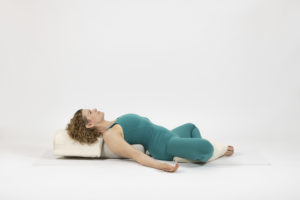
Morning Glories by Georgia O’Keefe
by Sandy
There are any number of reasons you might want to develop your own yoga practice. For example, some people need to tailor their practice to specific conditions, limitations, or personal goals, and some are simply more comfortable practicing on their own than in a group. Many years ago, when I first started working on developing my own personal practice, it was because I didn’t want to have to depend on classes to get my yoga fix. Just a few months into taking yoga regularly at a studio, I had become very aware of how profoundly the practice boosted my mood and well-being and supported my overall health. I was highly motivated to make it a daily part of my life, and, realistically, between time and budget constraints, how many classes can you go to in a week?
The covid pandemic has added yet another possible motivation for establishing a home practice. The pandemic shut down all the yoga studios for a couple of years and, even now that they’re opening back up, group classes are both less appealing and less viable for many people. For those who aren’t ready to go back into a yoga studio, the options are Zoom classes or solo practice, or some combination.
So, as someone who has been practicing solo for decades, perhaps I can help those who want to establish a home practice, whatever the reason may be, with getting started. It took me quite a while to develop my own and I learned a lot along the way. One of the many things I discovered was that the time of day mattered a lot to how and what I practiced, something that has become even more true with age.
Often the first questions that arise when trying to practice on your own have to do with not knowing what to practice. It can be challenging just to get yourself onto your mat (a topic I’ll address in a future post) and then, once you’re there, it’s pretty common to find yourself floundering around. In my case, to start with I just tried to do some of the things I’d learned in classes and, because this was pre-internet, I also used books to remind myself of the poses and learn more about them. There are plenty of great online resources you can find now to support your practice.
As my practice developed over time, I found the internal truth of much of what I had been taught by my early teachers about what to practice at different times of day and how to combine poses. Experimentation taught me that my back didn’t like to go right from backbends into forward bends, just as I’d been cautioned; transitioning with some gentle twists and other neutralizing poses made a huge difference in how good those poses felt and how accessible they were. And high energy poses such as Sun Salutations and Upward Bow pose (Urdvha Dhanurasana) were great for a morning practice, while quieter, gentler poses worked better for me later in the day. I’ve sometimes heard backbends referred to as “the coffee of yoga poses,” and I did find that a backbend-focused practice later the day could leave me buzzy and disturb my sleep. Although this is controversial, it did feel better to me to do forward bends and restoratives during my menstrual cycle, for example, and not practice inversions and backbends on those days.
I’ve found that honoring the time of day has been even more important as I’ve gotten older. The later in the day it is, the more poses that are “yin” and have that quieter, gentler energy appeal to me. Those are seated and reclined poses, restoratives, and asanas that would be thought of as “cool downs.” That cooling energy comes from the body releasing toward the ground into gravity rather than moving against or away from it. These types of poses help calm the nervous system, rest the body, and prepare the mind-body for sleep as well as Savasana.
I prefer to practice first thing in the morning, and when I do, I focus on waking up my body and energizing for the day with Sun Salutations, perhaps with jumps, standing poses, backbends, and/or core strengthing work and balance poses. But honestly, it doesn’t always happen. Sometimes I wake up too late to get a full practice in before I have to start my workday. On those days, I try to squeeze in a shorter session with some gentle stretches and, if I have time, a few quick Sun Salutations, followed by a brief meditation.
Other times, something pulls my attention before I get to my mat and then, if too much time goes by, I’ll be hungry and the need for breakfast supplants my morning practice completely. On these days, I hope to have a late afternoon or early evening practice, like the work-to-home transition practice I wrote about in my last post. Or, depending on my energy, I might still do a few Sun Salutations for movement after a day at the computer, but they will be a much gentler, modified version, without jumps or pushups. Although that later practice also doesn’t always happen as intended, I manage to fit in some kind of yoga practice more days than not. If I’m fatigued, promising myself a “wind down” practice, one in which I stay close to the ground with those cooling poses, can help me get myself to my mat later in the day rather than blowing off my practice altogether.
Once I’ve missed that first thing in the morning window, another obstacle is negotiating practice time with meals. I can tell you from experience, it really doesn’t feel good to do yoga on a full stomach. Especially twists and inversions! The general recommendation is to wait two hours after eating before practicing, but sometimes that’s just not workable with my schedule.

Reclined Cobbler’s Pose
So, if I’ve eaten recently when I find myself with a window of time to practice, my solution is restorative poses. These would likely be a mild back-bending position over blocks or a bolster, some version of Supported Reclined Cobbler’s pose (Supta Baddha Konasana), and then some form of supported Savasana. These restful poses can actually help promote good digestion, and even just one or two restoratives can feel so good in the afternoon and be a great break from a busy or stressful day.
I do know that because I live alone and have recently started working from home, it’s relatively easy for me to have control over my own time. For those who are commuting to a workplace or have young kids at home, there are more obstacles to finding practice time. If your only time to practice is after dinner, or once the kids are in bed, the challenges will be different ones. If your typical day is spent sitting and working at a desk all day, it’s a good idea to develop a practice that is an antidote to that. One possibility is some shoulder and chest openers, as well as some energizing poses, before dinner (so as not to be practicing those on a full stomach) and then some cooling floor stretches and/or Savasana or another restorative pose just before bed. The key is really to find both the time and approach that works best for you, one that fits into and supports the life you have right now. You can also be sure that life will continually change over time, and you can adjust your practice to suit changing circumstances as it does.
If I had to say what the most important thing I’ve learned from my practice is, quite possibly it would be that any yoga is better than no yoga at all. So finding strategies like these, which help me fit practice into and support the reality of daily life rather than demanding perfection, has been the key to sustaining my practice over time.
For information about Sandy’s classes, writing, and positive psychology journey see www.sandyblaine.com.
• Follow Yoga for Healthy Aging on Facebook and follow Nina on Instagram •Pre-order Yoga for Times of Change: Practices and Meditations for Moving Through Stress, Anxiety, Grief & Life’s Transitions here. • Order Yoga for Healthy Aging: A Guide to Lifelong Well-Being here


Leave A Comment